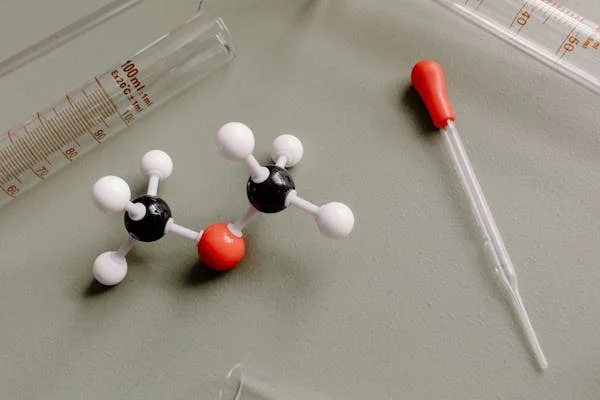Introduction
HCOOCH CH2 H2O represents the hydrolysis reaction of methyl formate (HCOOCH3) with water (H2O). This reaction is significant in industrial chemistry as it produces methanol (CH3OH) and formic acid (HCOOH), which have widespread applications in chemical manufacturing, pharmaceuticals, and biofuels.
Hydrolysis is a key process in breaking down esters like methyl formate into simpler compounds. The efficiency of this reaction depends on various factors, including temperature, pH levels, catalysts, and water concentration. In industries, acidic or basic catalysts are often used to speed up the hydrolysis process, ensuring maximum yield and efficiency.
This article provides a detailed overview of the HCOOCH CH2 H2O reaction, including its mechanism, influencing factors, industrial significance, safety precautions, and environmental impact.
Chemical Reaction and Mechanism
Balanced Chemical Equation
The hydrolysis of HCOOCH CH2 H2O follows this equation:
HCOOCH3 + H2O → CH3OH + HCOOH
- Reactants: Methyl formate (HCOOCH3) and Water (H2O)
- Products: Methanol (CH3OH) and Formic Acid (HCOOH)
This reaction can occur naturally, but it is significantly accelerated under acidic or basic conditions.
Step-by-Step Mechanism
- Nucleophilic Attack: The oxygen in water (H2O) attacks the carbonyl carbon of methyl formate, initiating bond instability.
- Intermediate Formation: A temporary transition state forms, weakening the ester bond.
- Bond Cleavage: The ester bond breaks, releasing methanol and formic acid.
- Reaction Completion: The products dissolve in water, completing the hydrolysis process.
Types of Hydrolysis for HCOOCH CH2 H2O
| Hydrolysis Type | Catalyst Used | Reaction Speed | Application |
| Acidic Hydrolysis | HCl, H2SO4 | Fast | Pharmaceutical & chemical industries |
| Basic Hydrolysis (Saponification) | NaOH, KOH | Very Fast | Soap and ester manufacturing |
| Neutral Hydrolysis | No catalyst | Slow | Rarely used industrially |
Acidic and basic hydrolysis are preferred due to their efficiency and industrial benefits.
Factors Affecting the Hydrolysis Reaction
Temperature Influence
Higher temperatures increase molecular movement, making hydrolysis faster. Industrial setups maintain 60-80°C for optimized reaction speed.
Effect of pH Levels
- Acidic conditions (HCl, H2SO4): Enhance proton donation, accelerating the reaction.
- Basic conditions (NaOH, KOH): Facilitate rapid ester bond cleavage.
Catalysts Role
Catalysts lower the activation energy, allowing the reaction to proceed faster without excessive heat.
Water Concentration
Excess water shifts the reaction equilibrium toward complete hydrolysis, improving yield.
Ester Concentration
Higher methyl formate concentration boosts reaction rate, provided enough water is available.
Industrial Applications of HCOOCH CH2 H2O Hydrolysis
Chemical Production
This reaction is crucial for manufacturing methanol and formic acid, widely used in industrial synthesis.
Pharmaceutical Industry
- Methanol is a solvent in drug production.
- Formic acid acts as a preservative and antibacterial agent.
Agriculture & Food Industry
- Formic acid is used in livestock feed preservation.
- Methanol contributes to fruit ripening and flavoring.
Biofuel & Renewable Energy
- Methanol is a key biofuel component.
- Formic acid is studied for hydrogen storage in fuel cells.
Textile & Leather Industry
- Formic acid is used in dyeing and tanning.
- Methanol derivatives aid in fabric processing.
Safety and Handling Precautions
Health Risks
- Methanol is toxic if inhaled or ingested.
- Formic acid is corrosive and can cause burns.
Protective Measures
- Wear gloves, goggles, and lab coats.
- Conduct experiments under a fume hood.
Storage Guidelines
- Methyl formate should be stored in sealed containers away from heat and flames.
Disposal Methods
- Neutralize formic acid with sodium bicarbonate before disposal.
- Follow environmental regulations for methanol waste.
Environmental Impact of Hydrolysis Products
Biodegradability
- Formic acid breaks down quickly in natural environments.
- Methanol evaporates, reducing long-term contamination risks.
Pollution Concerns
- Methanol contributes to air pollution if released uncontrolled.
- Formic acid must be treated before wastewater disposal.
Waste Management Solutions
- Industries recycle methanol and formic acid to reduce waste.
Comparison: Hydrolysis of HCOOCH CH2 H2O vs. Other Esters
| Ester | Hydrolysis Speed | Industrial Use | Environmental Impact |
| Methyl Formate (HCOOCH3) | Fast | Methanol, Formic Acid | Low |
| Ethyl Acetate (CH3COOC2H5) | Moderate | Solvents, Perfumes | Moderate |
| Methyl Acetate (CH3COOCH3) | Slow | Adhesives, Coatings | Moderate |
| Triglycerides (Fats/Oils) | Very Slow | Soap, Biodiesel | High |
Methyl formate hydrolysis is preferred due to its fast reaction rate and low environmental impact.
Conclusion
The HCOOCH CH2 H2O reaction is a vital process in chemical and industrial applications. It efficiently converts methyl formate into methanol and formic acid, two widely used compounds. The reaction can be accelerated through acidic or basic catalysis, optimizing production efficiency.
Safety precautions are essential due to the toxicity of methanol and the corrosive nature of formic acid. Industries using this process must implement proper storage, handling, and waste management to minimize health and environmental risks.
From an environmental perspective, methanol and formic acid are biodegradable, making this hydrolysis relatively eco-friendly. However, industrial-scale operations must still follow waste disposal regulations to prevent pollution.
As chemical research advances, methyl formate hydrolysis is a key reaction that contributes to sustainable chemical production, biofuels, and industrial applications worldwide.
Frequently Asked Questions (FAQs)
What is the chemical reaction of HCOOCH CH2 H2O?
The reaction represents the hydrolysis of methyl formate (HCOOCH3) with water (H2O), producing methanol (CH3OH) and formic acid (HCOOH).
What catalyst is used for HCOOCH CH2 H2O hydrolysis?
Acidic catalysts like HCl or H2SO4 and basic catalysts like NaOH or KOH speed up hydrolysis, making it more efficient.
What are the industrial applications of HCOOCH CH2 H2O hydrolysis?
This reaction is used in chemical manufacturing, pharmaceuticals, biofuels, agriculture, and textile industries to produce methanol and formic acid.
Is HCOOCH CH2 H2O hydrolysis safe for the environment?
Yes, the products methanol and formic acid are biodegradable. However, proper waste management is necessary to prevent pollution and toxicity risks.
How does temperature affect HCOOCH CH2 H2O hydrolysis?
Higher temperatures increase reaction speed by enhancing molecular movement, making the hydrolysis process faster in industrial applications.







